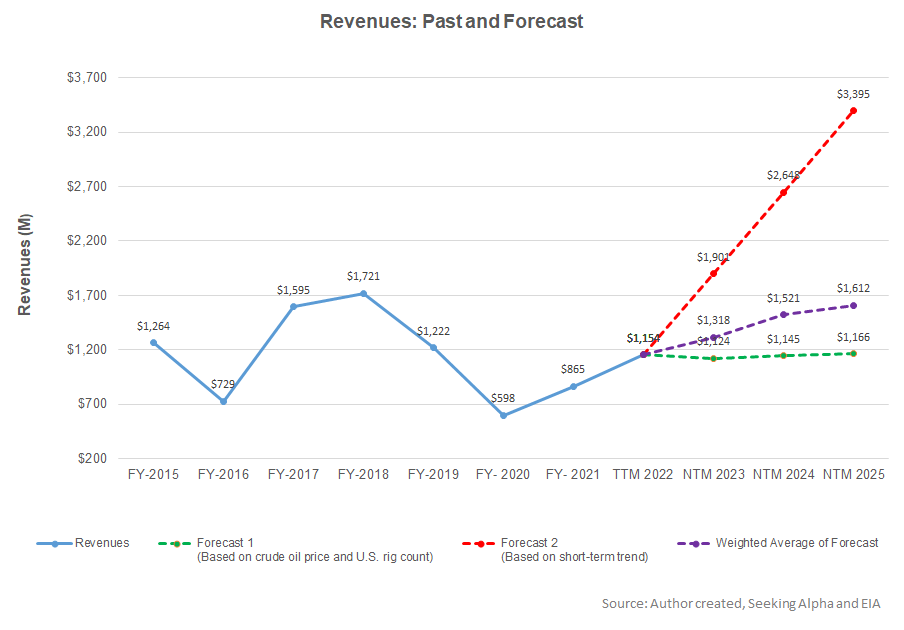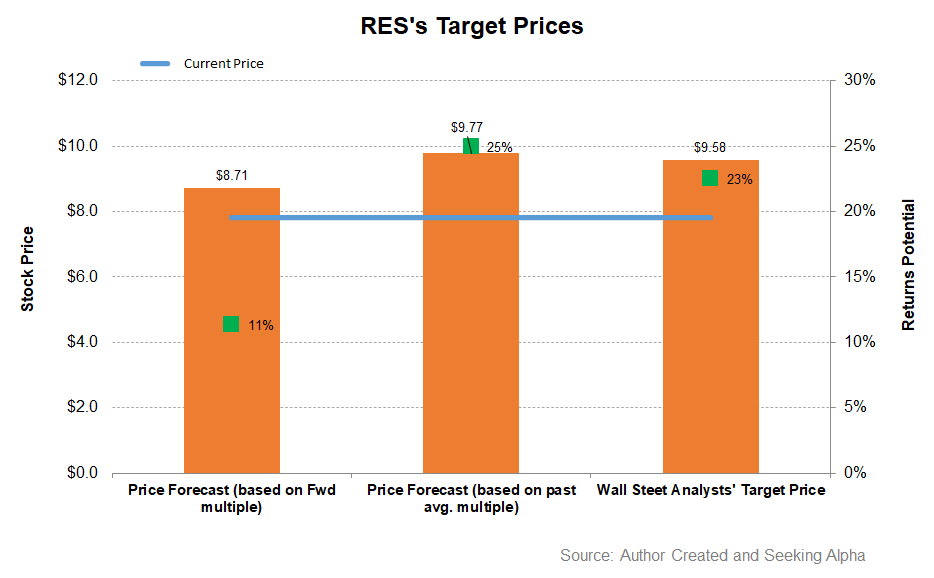- The regression model suggests that revenue growth is steady for NTM 2023 and NTM 2024 but may decrease after that
- EBITDA can increase sharply in the next couple of years
- The stock is marginally overvalued versus its peers at the current level
Part 1 of this article discussed RPC’s (RES) outlook, performance, and financial condition. In this part, we will discuss more.
Linear Regression Based Forecast

Based on a regression equation on the key energy indicators (crude oil price and the US rig count) and RES’s reported revenues for the past seven years and the previous four quarters, revenues can increase steadily (14%-15%) in the next couple of years. However, the growth rate can moderate in NTM 2025.

Based on the regression model and the forecast revenues, the company’s EBITDA can improve sharply over the next couple of years. However, EBITDA can decrease in NTM 2025, per the model.
Target Price And Relative Valuation

Calculating the EV using RES’s forward EV/EBITDA multiple shows that the returns potential using the forward multiple (5.6x) is lower (11% upside) compared to the returns potential using the past average multiple (25% upside) and sell-side analysts’ estimates (23% upside) in the next year.

RES’s forward EV-to-EBITDA multiple contraction versus the current EV/EBITDA suggests a slightly lower EBITDA growth than the peers, typically reflected in a lower EV/EBITDA multiple. However, the company’s EV/EBITDA multiple (9.4x) is higher than its peers (PUMP, NR, and LBRT). So, the stock is marginally overvalued with a negative bias versus its peers. One sell-side analyst recommended a “Buy” in August. Four recommended a “Hold,” while one recommended a “Sell.”
What’s The Take On RES?

RPC has started reactivating idle pressure pumping equipment as customer demand and market pricing recover. Although its pressure pumping fleets would remain little changed in the near term, pricing is set to improve. The energy indicators improved steadily over the past year. The share of longer-duration contracts is increasing gradually, leading to a higher margin in the coming quarters. So, the stock outperformed the VanEck Vectors Oil Services ETF (OIH) in the past year.
However, a higher activity level also dried up cash flows in 1H 2022. In FY2022, its capex would increase significantly, reflecting capitalized maintenance for existing equipment and refurbishing an existing fleet. The company has zero debt and a healthy liquidity base. The stock is slightly overvalued versus its peers, with a slight negative bias. Investors might want to hold the stock to gain from a medium-term recovery.













